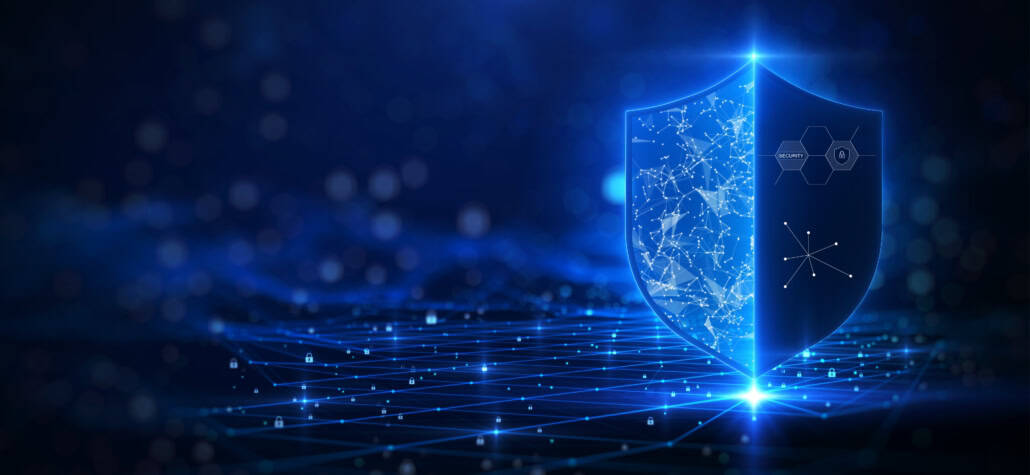In Brief
In today’s digital age, cybersecurity has become a critical concern for manufacturing. Complex manufacturers face unique challenges due to their reliance on interconnected systems and advanced technologies, making them prime targets for cyber threats. As the industry evolves, integrating sustainability practices into cybersecurity strategies is emerging as a powerful approach to enhance cyber resilience.
By aligning sustainability initiatives with cybersecurity measures, manufacturers can protect their operations from cyberattacks and promote long-term environmental and economic benefits. So, this integration nurtures a complete methodology for security, ensuring that manufacturing processes are secure and sustainable. Read on!
Table of content:
Listen to the Article
Table highlighting key aspects of enhancing cyber resilience through sustainability for complex manufacturers:
| Aspect | Key Insights | Value to Businesses |
|---|---|---|
| Cyber Risk Mitigation | Implementing proactive security measures | Reduces vulnerabilities and prevents breaches |
| Sustainable IT Infrastructure | Leveraging eco-friendly and secure technology solutions | Enhances efficiency and regulatory compliance |
| Supply Chain Security | Ensuring cybersecurity across the entire supply chain | Strengthens trust and operational resilience |
| Continuous Monitoring | Real-time assessment of cyber threats | Improves incident response and preparedness |
Cybersecurity Challenges for Complex Manufacturers
Large-scale manufacturers operate within a highly interconnected environment, utilizing advanced technologies such as IoT, robotics, and AI. This interconnectedness, while enhancing operational efficiency, also introduces significant cybersecurity complexities.
According to a research paper on Link Springer, integrating innovative technologies with older systems often creates vulnerabilities, as older systems may lack robust security features. In addition, these manufacturers’ vast supply chains and global operations increase the attack surface, making it challenging to secure every endpoint.
Common Cyber Threats and Vulnerabilities
These include:
- Ransomware Attacks
- Industrial Espionage
- Supply Chain Attacks
- IoT Vulnerabilities
- Phishing and Social Engineering
- Legacy Systems
Ransomware Attacks
Manufacturing companies are prime targets for ransomware due to the critical nature of their operations. Ransomware attacks mean malicious software encrypting a company’s data, rendering it unavailable until the company pays the ransom.
These interferences can lead to substantial financial losses, production delays, and company reputation damage. The downtime caused by such attacks can be devastating in manufacturing, where continuous production is essential.
Industrial Espionage
A 2021 study shows that industrial espionage involves competitors or malicious actors targeting manufacturers to steal proprietary information, trade secrets, or intellectual property. So, this cyber threat can compromise a company’s competitive advantage, leading to financial losses and a weakened market position. Advanced persistent threats (APTs) are often used in these attacks, where intruders remain undetected within the network for extended periods, gathering valuable information.

Supply Chain Attacks
Cybercriminals benefit from the weaknesses in the supply chain to gain access to manufacturers’ networks. It compromises third-party vendors or suppliers to infiltrate the primary target. Supply chain attacks are particularly concerning because they bypass traditional security measures, allowing attackers to introduce malware or steal sensitive data through trusted connections.
IoT Vulnerabilities
The proliferation of IoT devices in manufacturing environments introduces numerous entry points for cyberattacks. IoT devices, such as sensors and smart machinery, often lack robust security features, making them susceptible to exploitation. Cybercriminals can exploit these vulnerabilities to disrupt operations, steal sensitive data, or even take control of critical systems, leading to significant operational and financial impacts.
Phishing and Social Engineering
Employees in manufacturing firms are often targeted through phishing emails and social engineering tactics. A 2021 study published by Frontiers states that phishing attacks are fraudulent emails that trick recipients into exposing private or confidential information or downloading malicious software. Social engineering exploits human psychology to manipulate individuals into performing actions compromise security. So this can cause unauthorized access to systems, data breaches, and significant financial losses.
Legacy Systems
Many manufacturers still rely on outdated systems that are no longer supported with security updates, making them susceptible to exploitation by cybercriminals. Legacy systems often lack modern security features and are more vulnerable to attacks. Cybercriminals can gain access to the network, disrupt operations, or steal sensitive information. Upgrading or securing these systems is essential to mitigate the associated risks.
The Role of Sustainability in Cyber Resilience
Sustainability practices can significantly enhance cyber resilience within manufacturing organizations by promoting a holistic approach to security and operational efficiency. Sustainable practices often involve adopting advanced technologies and processes that inherently improve cybersecurity. For instance, energy-efficient systems and smart grids require vigorous security measures to safeguard against cyber threats, enhancing overall cyber resilience.
Moreover, sustainability initiatives encourage manufacturers to adopt a proactive stance towards risk management. According to the World Economic Forum, this includes regular assessments of environmental and cyber risks, leading to comprehensive security measures. Sustainable practices also promote using renewable energy sources and eco-friendly materials, reducing dependency on vulnerable supply chains and mitigating the risk of cyberattacks targeting these areas.
Benefits of Aligning Sustainability Initiatives with Cybersecurity Strategies
The following are the advantages of aligning sustainability initiatives with cybersecurity strategies:
- Improved Risk Management: Integrating sustainability with cybersecurity strategies allows manufacturers to simultaneously address environmental and cyber risks. This dual focus ensures a more comprehensive risk management approach, reducing vulnerabilities and enhancing resilience.
- Operational Efficiency: Sustainable practices often involve optimizing resources and processes, increasing operational efficiency. Efficient operations are less prone to disruptions, making it easier to maintain robust cybersecurity measures.
- Regulatory Compliance: Aligning sustainability initiatives with cybersecurity strategies helps manufacturers comply with environmental and cybersecurity regulations. This dual compliance avoids legal penalties and enhances the organization’s reputation and trustworthiness.
- Cost Savings: Sustainable practices are directly proportional to cost savings through decreased energy consumption and waste. These savings can be reinvested into cybersecurity measures, further strengthening the organization’s defenses against cyber threats.
- Enhanced Reputation: Companies prioritizing sustainability and cybersecurity are perceived more positively by stakeholders, including investors, customers, and regulators. This improved reputation can increase business opportunities and a stronger market position.
- Resilient Supply Chains: Sustainable supply chain practices, such as sourcing from eco-friendly and secure suppliers, reduce the risk of supply chain attacks. This resilience ensures that manufacturing operations remain safe and uninterrupted.
Case Studies in Successful Integration
Case Study 1
An international energy management and automation leader, Schneider Electric has successfully integrated sustainable practices into its supply chain security to enhance cyber resilience.
Challenge
Due to its extensive and complex supply chain, Schneider Electric faced significant cybersecurity challenges. The company needed to secure its operations against cyber threats while maintaining its commitment to sustainability.
Solution
To address these challenges, Schneider Electric implemented a comprehensive strategy that combined sustainability initiatives with robust cybersecurity measures:
Sustainable Supplier Selection: The company prioritized working with suppliers who adhered to strict environmental and cybersecurity standards. This ensured that all supply chain partners were committed to sustainability and security.
Energy-Efficient Technologies: Schneider Electric integrated energy-efficient technologies into its supply chain operations. These technologies reduced the company’s carbon footprint and required advanced security measures to protect against cyber threats.
Regular Audits and Assessments: The company conducted regular audits and assessments of its supply chain to identify and mitigate potential cybersecurity risks. These assessments included evaluating suppliers’ sustainability practices and ensuring they met Schneider Electric’s standards.
Employee Training and Awareness: Schneider Electric invested in training programs to foster awareness among the workforce about the importance of cybersecurity and sustainability. So, this included educating staff on best practices for maintaining secure and sustainable supply chain operations.
Results
By integrating sustainable methods into its supply chain security, Schneider Electric achieved several key outcomes:
Enhanced Cyber Resilience: The company’s supply chain became more resilient to cyber threats, lowering the risk of data breaches and disruptions.
Improved Sustainability: Schneider Electric’s commitment to sustainability was strengthened, reducing its overall environmental impact.
Increased Operational Efficiency: Integrating energy-efficient technologies and sustainable practices improved the efficiency of supply chain operations, resulting in reduced resource consumption and cost savings.
Stronger Supplier Relationships: By working with suppliers who shared their commitment to sustainability and security, Schneider Electric built stronger, more collaborative relationships with its partners.

Case Study 2
Siemens has effectively leveraged sustainability initiatives to enhance data security and compliance measures.
Challenge
Siemens faced the dual challenge of ensuring compliance with stringent environmental regulations while safeguarding sensitive data across its extensive operations. The company needed to find a way to integrate these objectives to improve overall resilience.
Solution
The company implemented the following solutions:
Sustainable Data Centers: Siemens transitioned to energy-efficient data centers powered by renewable energy sources. These data centers reduced the company’s carbon footprint and incorporated advanced security protocols to protect sensitive information.
Compliance with Environmental Standards: Siemens adhered to global environmental standards such as ISO 14001, which required regular audits and assessments. These audits included evaluations of data security practices, ensuring that ecological and cybersecurity measures were aligned.
Advanced Data Analytics: The company utilized advanced data analytics to monitor and manage environmental compliance. This approach allowed Siemens to identify potential risks and implement proactive measures to mitigate them, enhancing environmental and data security.
Employee Training Programs: Siemens invested in complete training programs to educate the workforce about the significance of environmental compliance and data security. It included best practices for maintaining secure and sustainable operations.
Results
Siemens significantly reduced the risk of data breaches and unauthorized access. Their adherence to environmental standards ensured compliance with environmental and data security regulations, avoiding legal penalties and enhancing the company’s reputation.
The use of advanced data analytics improved the efficiency of compliance monitoring, allowing Siemens to identify and address potential risks quickly. Furthermore, the transition to energy-efficient data centers and adherence to environmental standards helped Siemens achieve its sustainability goals, reducing its overall environmental impact.
Case Study 3
General Electric (GE) is a multinational company. The organization successfully combines IoT measures with effective practices to improve cyber resilience.
Challenge
GE faced the challenge of securing its extensive network of IoT devices while maintaining energy efficiency across its manufacturing operations. The company needed to protect its IoT infrastructure from cyber threats without compromising energy efficiency.
Solution
GE implemented the following solutions:
Secure IoT Framework: GE developed a secure IoT framework with robust encryption, secure communication protocols, and regular security updates. This framework ensured that all IoT devices were protected against cyber threats.
Energy-Efficient IoT Devices: The company invested in energy-efficient IoT devices that consumed less power while maintaining high performance. These devices were designed to operate securely within GE’s IoT framework.
Real-Time Monitoring and Analytics: GE utilized real-time monitoring and advanced analytics to track the performance and security of its IoT devices. This method allowed the corporation to quickly recognize and respond to potential security threats while optimizing energy usage.
Employee Training and Awareness: GE conducted training programs to educate employees about the importance of IoT security and energy efficiency. This included best practices for maintaining secure and energy-efficient IoT operations.
Results
Using energy-efficient IoT devices and real-time monitoring optimized energy consumption, decreasing ecological impact and cost savings. Integrating security and energy efficiency measures improved operational efficiency, reducing downtime and increasing productivity. Additionally, training programs raised employee awareness about IoT security and energy efficiency, fostering a culture of security and sustainability within the organization.
Strategies for Cybersecurity-Sustainability Integration
- Adopt Energy-Efficient Technologies
- Secure Supply Chains
- Implement Sustainable Data Centers
- Regular Risk Assessments
- Employee Training and Awareness
- Advanced-Data Analytics
- IoT Security and Efficiency
- Sustainable Procurement Policies
- Compliance with Standards
- Collaborative Initiatives
Adopt Energy-Efficient Technologies
Implement energy-efficient hardware and software solutions that require robust security measures. This reduces energy consumption and ensures systems are protected against cyber threats. For example, using energy-efficient servers with built-in security features can help minimize energy use and attack vulnerability.
Secure Supply Chains
Work with suppliers who adhere to both environmental and cybersecurity standards. Regularly audit and assess supply chain partners to ensure they meet your sustainability and security requirements. This can involve setting clear criteria for supplier selection and conducting periodic reviews to verify compliance.

Implement Sustainable Data Centers
A 2023 study published by MDPI states that the transition to data centers powered by renewable energy sources. Ensure these data centers incorporate advanced security protocols to protect sensitive information. Sustainable data centers can reduce carbon footprints while maintaining high levels of data security through measures like encryption and multi-factor authentication.
Regular Risk Assessments
Conduct regular assessments of both environmental and cyber risks. Use the findings to implement comprehensive security measures that address vulnerabilities in both areas. This proactive approach helps identify potential threats and allows for timely mitigation strategies.
Employee Training and Awareness
Educate staff on the implications of sustainability and cybersecurity. Provide training on best practices for maintaining secure and sustainable operations. Regular training sessions can keep staff updated on the latest threats and sustainable practices, fostering a culture of security and environmental responsibility.
Advanced-Data Analytics
Utilize data analytics to monitor and manage environmental compliance and cybersecurity. This approach helps identify potential risks and implement proactive measures to mitigate them. Advanced analytics can provide insights into energy usage patterns.
IoT Security and Efficiency
Invest in secure, energy-efficient IoT devices. Ensure these devices are integrated into a secure IoT framework with encryption and regular security updates. Secure IoT devices can enhance operational efficiency while protecting against cyber threats.
Sustainable Procurement Policies
Develop procurement policies that prioritize sustainability and security. Choose vendors and products that meet high environmental and cybersecurity standards. Sustainable procurement can reduce ecological impact and ensure all products and services are compliant and secure.

Compliance with Standards
Adhere to global environmental and cybersecurity standards, such as ISO 14001 and ISO 27001. Regular audits and certifications ensure ongoing compliance and improvement. Compliance with these principles demonstrates a dedication to sustainability and security, enhancing the organization’s reputation.
Collaborative Initiatives
Engage in industry collaborations and partnerships focused on sustainability and cybersecurity. Sharing best practices and resources can enhance overall resilience. Joint efforts can improve innovative solutions and strengthen the industry’s collective defense against cyber threats.
Final Words
Integrating sustainability practices with cybersecurity strategies offers complex manufacturers a powerful approach to enhance their cyber resilience. By aligning these initiatives, companies can simultaneously address environmental and cyber risks, improving operational efficiency, cost savings, and regulatory compliance.
Stay up to date
Contact us
We are available in every major market. Let’s find a time to connect!
Contact us to learn more about our services
We will be more than happy to answer your questions and help you!
With our support, you will become a top-rated supplier. Your supply base will be solidified, and customers will recognize your good performance with more business, financial rewards and the stability that comes with it.
By phone. Our hours of operation are 8:00 AM – 5:00 PM EST.:
Canada toll free : 866-980-1387
US Office : 316-263-1288
GPS Tech : 316-267-2595







